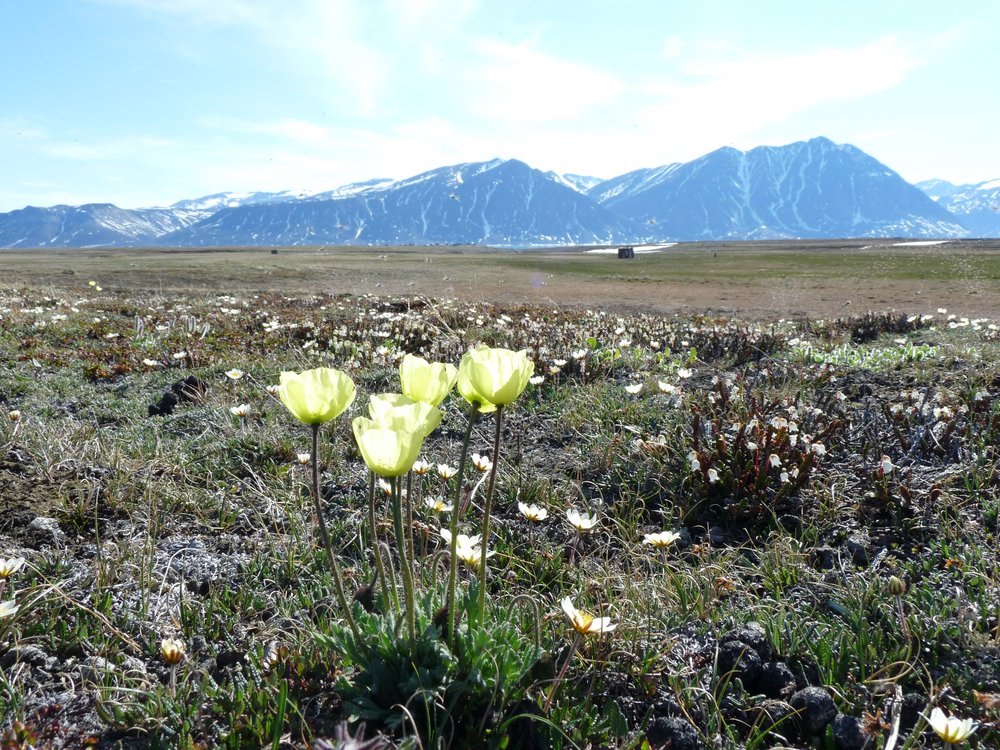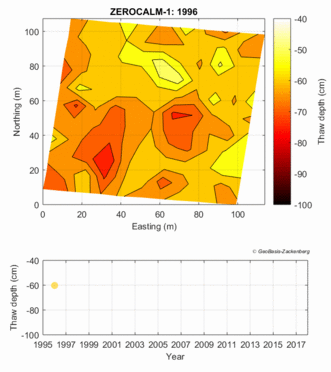Marts 2019
We are happy to announce a new name and logo for the research group Biogeochemistry in ArctiC Ecosystems, BACE. The research group is focusing on Arctic ecosystems and operate in the continuum between soil, vegetation, water and atmosphere. This is reflected in the BACE logo that indicates ecosystem-atmosphere interactions in a broad sense in both terrestrial and marine environments.
The BACE group works mainly with greenhouse gas exchange, surface energy exchanges, carbon cycling, permafrost, biogeochemistry, geomicrobiology and hydrology with a heavy emphasis on observational and experimental data gathering but also closely associated modeling efforts.
Current group members include professor Torben Røjle Christensen, associate professor Lise-Lotte Sørensen, senior researcher Mikhail Mastepanov, research coordinator Marie Arndal, post doc Efrén López-Blanco, research engineer Marcin Jackovitz-Korczynski, researcher Kirstine Skov and Ph.D students Johan Scheller and Maria Scheel. More information about the group and projects can be found at the website
Please contact Torben R. Christensen if you have any questions about BACE.
September, 2018
This year, snow melt in Zackenberg valley, northeast Greenland, was very slow. Date of snow melt and also the break-up of ice in the fjord was the latest on record since monitoring began in 1996. This had large consequences for plants and animals, as well as for ecosystem hydrology, energy exchange and greenhouse gas exchange. The GeoBasis program continued is 24th year of continuous monitoring of abiotic properties of the high arctic ecosystems in Zackenberg. This year, thermokarst erosion events were common. A thermokarst close to the Zackenberg Research Station drew particular interest, due to its rapid development. We monitored the thermokarst with drones and did also measure greenhouse gas emissions as well as took samples of exposed soil and ice for biogeochemical analyses.
You can see a few GeoBasis-related tweets from the Zackenberg research station account @ZERO74N. You can also find GEM @GEM_Arctic, Torben R. Christensen @TorbenRC and Magnus Lund @LundMagnus on Twitter!
June, 2018
Efrén López-Blanco will defend his thesis - Ecosystem-atmosphere interactions in the Arctic: using data-model approaches to understand carbon cycle feedbacks - on Friday 22 June 2018 at 09:30. The defence will be held at the Niels Bohr Auditorium, building 112, DTU Risø Campus, Frederiksborgvej 399, 4000 Roskilde.
June, 2018
A perspective article by Magnus Lund on feedback mechanisms from arctic tundra vegetation change and the need for coordinated monitoring and modelling efforts is now published in Environmental Research Letter. Access the paper (open access) here!

Photo: Magnus Lund
February, 2018
Permafrost - perennially frozen ground - is thawing as a consequence of climate warming. In high Arctic Zackenberg, the GeoBasis monitoring programme monitors thaw depth in two Circumpolar Active Layer Monitoring grids, called ZEROCALM-1 and ZEROCALM-2. The animation below illustrates the maximum thaw depth within ZEROCALM-1 grid each year since 1996, and the trend of permafrost thaw.

January, 2018
The recent cold snap in eastern North America, predictably, brought out questions from the usual suspects about climate change and global warming. Here, an all-star team of Arctic scientists, including Torben R. Christensen, explain how a warming Arctic can bring cold to temperate zones.
Read more here: climatecrocks.com/2018/01/12/new-video-if-its-global-warming-why-am-i-freezing/
December, 2017
Watch Efrén López-Blanco's presentation "Analysis on inter-annual variability of CO2 exchange in Arctic tundra: a model-data approach" from the American Geophysical Union (AGU) Fall meeting 2017.
September, 2017
Watch when #ICOScapes campaign comes to Zackenberg. Read more about the campaign here.
September, 2017
Download Efrén López-Blanco's poster presentation here.
April, 2017
Watch a 10 minute video presenting the SWIPA (Snow, Water, Ice and Permafrost in the Arctic) 2017 assessment and results. The SWIPA assessments are coordinated by the Arctic Monitoring and Assessment Programme (AMAP) - an Arctic Council Working Group.
SWIPA 2017: Snow, Water, Ice and Permafrost in the Arctic (2017) - long from AMAP on Vimeo.